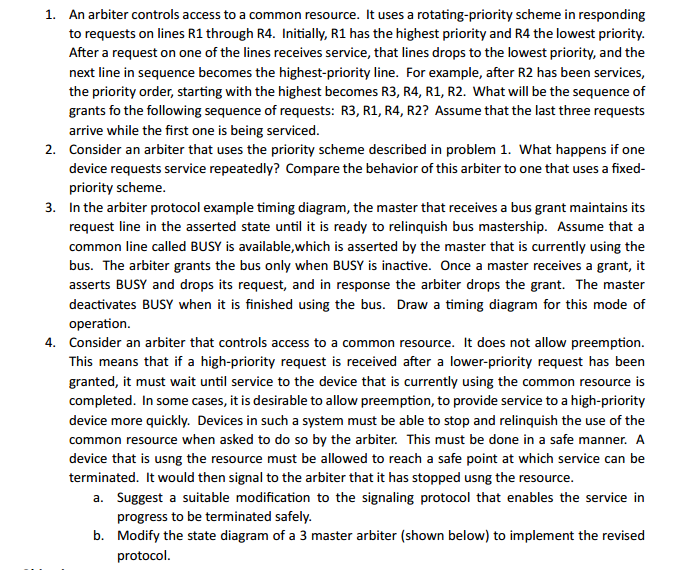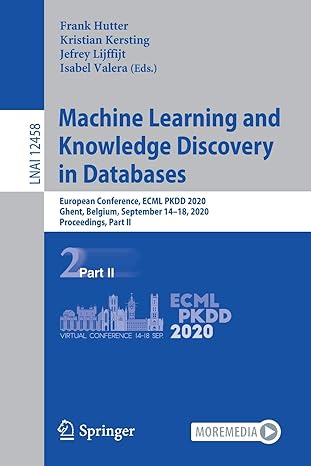
An arbiter controls access to a common resource. It uses a rotating-priority scheme in responding to requests on lines R1 through R4. Initially, R1 has the highest priority and R4 the lowest priority. After a request on one of the lines receives service, that lines drops to the lowest priority, and the next line in sequence becomes the highest-priority line. For example, after R2 has been services, the priority order, starting with the highest becomes R3, R4, R1, R2. What will be the sequence of grants of the following sequence of requests: R3, R1, R4, R2? Assume that the last three requests arrive while the first one is being serviced. Consider an arbiter that uses the priority scheme described in problem 1. What happens if one device requests service repeatedly? Compare the behavior of this arbiter to one that uses a fixed priority scheme. In the arbiter protocol example timing diagram, the master that receives a bus grant maintains its request line in the asserted state until it is ready to relinquish bus mastership. Assume that a common line called BUSY is available, which is asserted by the master that is currently using the bus. The arbiter grants the bus only when BUSY is inactive. Once a master receives a grant, it asserts BUSY and drops its request, and in response the arbiter drops the grant. The master deactivates BUSY when it is finished using the bus. Draw a timing diagram for this mode of operation. Consider an arbiter that controls access to a common resource. It does not allow preemption. This means that if a high-priority request is received after a lower-priority request has been granted, it must wait until service to the device that is currently using the common resource is completed. In some cases, it is desirable to allow preemption, to provide service to a high-priority device more quickly. Devices in such a system must be able to stop and relinquish the use of the common resource when asked to do so by the arbiter. This must be done in a safe manner. A device that is using the resource must be allowed to reach a safe point at which service can be terminated. It would then signal to the arbiter that it has stopped using the resource. a. Suggest a suitable modification to the signaling protocol that enables the service in progress to be terminated safely. b. Modify the state diagram of a 3 master arbiter (shown below) to implement the revised protocol







